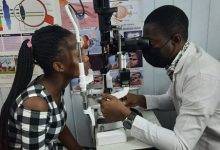Inserticide Treated Nets Utilisation of ITNs, an effective way to prevent malaria, other infectious diseases

The use of Insecticide-Treated Net (ITN) has been proven to be an effective preventive intervention in the control of malaria.
Malaria is an infectious disease, transmitted from person to person by an infected female mosquito, known as the anopheles and is a leading cause of child deaths in many parts of Africa.
To prevent malaria or control its prevalence, countries such as Ghana have instituted bodies such as the National Malaria Control Programme (NMCP) now elimination programme to spearhead and coordinate effort to eliminate or reduce infections to the barest minimum.
Interventions such as the indoor residual spraying, vector control, distribution of the ITNs, IPT for pregnant women and lately roll out of the malaria vaccination for children under five on piloting in some districts, has been deployed.
The Insecticide Treated Nets (ITNs) are designed to block mosquitoes physically and has been treated with safe, residual insecticide for the purpose of killing and repelling mosquitoes which carry the malaria parasite, to be used by households as a measure to prevent mosquito bites, which are transmitters of the malaria parasite.
As at the end of 2022, the ITNs distribution to pregnant women and children under five at health facilities stood at 1,809,866 while distribution to class two and six pupils in 29,509 schools across the country is 1,446,296.
However, in spite of the high ownership and distribution of the ITNs, non-use and misuse of the nets due to several factors remain a challenge; whiles some attribute the non-usage to discomfort due to heat, others also use it to fence their gardens to protect animals from intruding.
Ms Abbey is a mother of four and altogether they have seven insecticide treated nets in the home, but they don’t sleep under even one “I don’t feel comfortable sleeping under the nets because it becomes too hot, again I don’t have the bed stands on which to hang the nets”.
Mr Owusu, a father of three tells the GNA that he has about five ITNs in his house, but he has never used them, citing inconveniences in hanging of the net as the reason.
Meanwhile, he admitted that his children had malaria often because there were mosquitoes in their area, and he often uses mosquito coils.
Many households across the districts in Ghana have not less than three of the ITNs at every point due to the mass distribution at schools and at the health facilities, yet its usage has been very low.
But Dr Kofi Adomako-Mensah of the National Malaria Elimination Programme (NMEP) says the low utilisation of the ITNs in spite of its high ownership was a challenge and appealed to the public to use the nets for the intended purpose since it was part of the control measures to stop malaria infections.
“Now that we are moving towards elimination by the year 2030, we need commitment from all stakeholders including the public to adhering to all the measures for the elimination and one of it is the use of the ITNs.”
He refuted the notion that the bed nets generated heat saying, “we have heard people saying the bed nets generate a lot of heat, hence, their refusal to use but, that is not a fact.
He explained that the temperature under the bed nets is the same as the temperature of your room, therefore, if your room is hot, so will it be under the net and likewise if it’s cold.”
The distribution of the ITNs, Larvae Source Management (LSM), Indoor Residual Spraying, IPT for pregnant women and all other clinical protocols for malaria treatment such as test before treatment are efforts geared towards control and now the elimination goal by 2030.
Over the years, Ghana has steadily made progress in the malaria control efforts by reducing malaria-related deaths at all ages by 53 per cent from 333 in 2019 to 155 by the close of 2022 while under-five malaria case fatality rate also reduced by 50 per cent. “With the significant successes made over the years, elimination is possible, hence, the need to adhere to all the efforts such as the ITNs use for optimum and realisation of the 2030 elimination goal,” he added.
Malaria is still a leading cause of Out Patients Department (OPD) attendance with 40.5 per cent suspected, 19 per cent confirmed in 2022 in Ghana and a major cause of hospital admissions in health facilities across the country.
According to experts, the use of the ITNs also prevents mosquito bites which transmits the lymphatic filariases infection commonly known as elephantiasis, which is one of the 20 infectious diseases under the Ghana Neglected Tropical Diseases programme. —GNA




